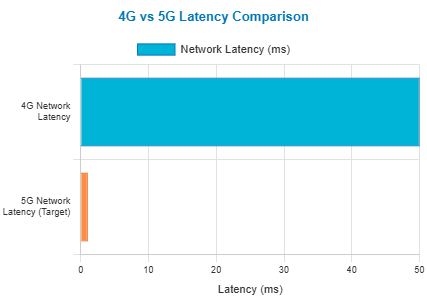In today’s rapidly evolving automotive landscape, the connected car is no longer a luxury but a fundamental expectation. From real-time navigation and infotainment to critical safety systems and over-the-air (OTA) updates, reliable connectivity is the lifeline of modern vehicles. However, when these vehicles cross international borders, particularly across diverse global regions, ensuring uninterrupted automotive connectivity presents a complex challenge. This is where advanced solutions like Multi-IMSI and sophisticated roaming strategies come into play, offering the key to truly seamless cross-border vehicle operations.
The Challenge of Cross-Border Automotive Connectivity
Imagine a vehicle driving from Germany through France, then into Italy, and perhaps even across continents. Each country and region has its own mobile network operators (MNOs) with varying coverage, signal strengths, and regulatory requirements. Traditional single-IMSI SIM cards, which rely solely on roaming agreements, often struggle to provide consistent, high-quality connectivity in such dynamic environments.
Key pain points for automotive OEMs and vehicle owners include:
- Inconsistent Coverage and Signal Drop-offs: Relying on a single roaming partner can lead to patchy coverage, especially in rural areas or where preferred roaming agreements are weak. This results in service interruptions for navigation, infotainment, and critical safety features.
- Latency Issues: Roaming often introduces higher latency as data may be backhauled to the home network’s core, delaying critical real-time applications like emergency services, V2X communication, or remote diagnostics.
- “Permanent Roaming” Bans: Many countries globally have regulations or commercial policies that restrict or prohibit permanent roaming for devices, forcing OEMs to deploy local SIMs or face penalties and service termination. This significantly increases logistical complexity and cost.
- Unpredictable Costs: Roaming charges can be high and unpredictable, making it difficult for OEMs to manage the total cost of ownership for connected services over a vehicle’s lifetime.
- Diverse Regulatory Compliance: Navigating varying data privacy laws (like GDPR in Europe, CCPA in California, and local data localization requirements) across different countries adds another layer of complexity for data transfer and storage in connected vehicles.
Roaming vs. Multi-IMSI: Understanding the Solutions
While both roaming and Multi-IMSI aim to provide connectivity beyond a single MNO’s home network, their approaches differ significantly:
Roaming:
Traditional roaming allows a device to connect to a partner network when outside its home network’s coverage area, based on agreements between MNOs. It’s often a temporary solution, and its effectiveness is entirely dependent on the strength and breadth of these pre-negotiated agreements. For vehicles that are permanently roaming, it faces limitations due to technical performance, cost, and regulatory restrictions.
Multi-IMSI (Multiple International Mobile Subscriber Identities):
Multi-IMSI technology fundamentally changes the game. A Multi-IMSI SIM (which can be a traditional physical SIM or an embedded eSIM/eUICC) stores multiple IMSIs. Each IMSI is associated with a different MNO’s profile. This allows the SIM to dynamically switch between these pre-loaded profiles based on factors like signal strength, network availability, cost, or local regulatory requirements.
The Power of Multi-IMSI for Automotive Connectivity
For the automotive industry, Multi-IMSI offers compelling advantages, particularly when combined with the flexibility of eSIM/eUICC technology:
- True Global Coverage & Network Resilience: With multiple IMSIs, vehicles can always connect to the strongest available local network, drastically reducing dead zones and ensuring uninterrupted automotive connectivity. This provides superior network resilience and uptime.
- Optimized Connectivity Costs: By leveraging local network profiles, OEMs can often access more favorable local data rates, significantly reducing roaming charges and providing more predictable connectivity costs over the vehicle’s lifespan.
- Regulatory Compliance: Multi-IMSI solutions help OEMs comply with “permanent roaming” restrictions and diverse data localization laws by enabling vehicles to connect as “local” devices through a local IMSI. This is crucial for deploying connected services across various international markets.
- Enhanced Quality of Service (QoS): Direct access to local networks means lower latency and higher bandwidth, critical for real-time applications such as precise navigation, V2X (Vehicle-to-Everything) communication, and timely OTA updates.
- Simplified Logistics and Scalability: A single Multi-IMSI eSIM can be provisioned globally, eliminating the need for multiple SKUs or complex SIM swaps. This streamlines manufacturing, logistics, and supply chain management for global vehicle deployments.
Multi-IMSI and the eSIM/eUICC
The true power of Multi-IMSI is unlocked when paired with eSIM (embedded SIM) and eUICC (embedded Universal Integrated Circuit Card) technology. While Multi-IMSI provides the “brains” for switching between networks, eUICC offers the “body” – a tamper-resistant, embedded chip that allows for remote provisioning and management of multiple operator profiles over the air (OTA).
Practical Use Cases for Seamless Cross-Border Automotive Connectivity
Multi-IMSI and advanced roaming solutions are vital across a spectrum of connected vehicle services:
- Infotainment & Navigation: Seamless streaming of geo-restricted content and uninterrupted real-time traffic updates across borders. Imagine uninterrupted music streaming from Germany to Japan, or real-time traffic updates delivered instantly, regardless of the country.
- eCall & Safety Systems: Ensures that critical emergency calls and automatic crash notifications function reliably and with low latency, anywhere in the world, adhering to strict regulatory requirements.
- Remote Diagnostics & Predictive Maintenance: Continuous upload of vehicle telematics data for remote monitoring and predictive maintenance, preventing breakdowns and optimizing service schedules, even for international fleets.
- Over-the-Air (OTA) Updates: Reliable and efficient delivery of software updates for vehicle systems, infotainment, and ADAS features, crucial for vehicle performance and security across all markets.
- Autonomous Driving & ADAS: Provides the low-latency, high-bandwidth, and highly reliable connectivity essential for V2X communication (Vehicle-to-Vehicle, Vehicle-to-Infrastructure) and the complex data exchange required for future autonomous driving functions, enabling collaborative driving and real-time decision-making.
The Future: 5G-Powered & Partner-Driven for Automotive Connectivity
5G’s Transformative Role, enabling:
- Real-time V2X (Vehicle-to-Everything) communication.
- Ultra-low latency (as low as 1ms vs 4G’s ~50ms).
- Network Slicing for dedicated, reliable channels.
- Edge Computing for faster local processing.
5G makes Multi-IMSI solutions even more critical for data-intensive autonomous applications.

Horizon Connect: Your Partner for Seamless Automotive Connectivity
At Horizon Connect, we understand the intricacies of global cross-border automotive connectivity. We leverage cutting-edge Multi-IMSI and eSIM technologies to provide robust, reliable, and compliant solutions tailored for automotive OEMs, fleet managers, and telematics providers. Our expertise ensures that the vehicles remain seamlessly connected, no matter where the road takes them around the world.


